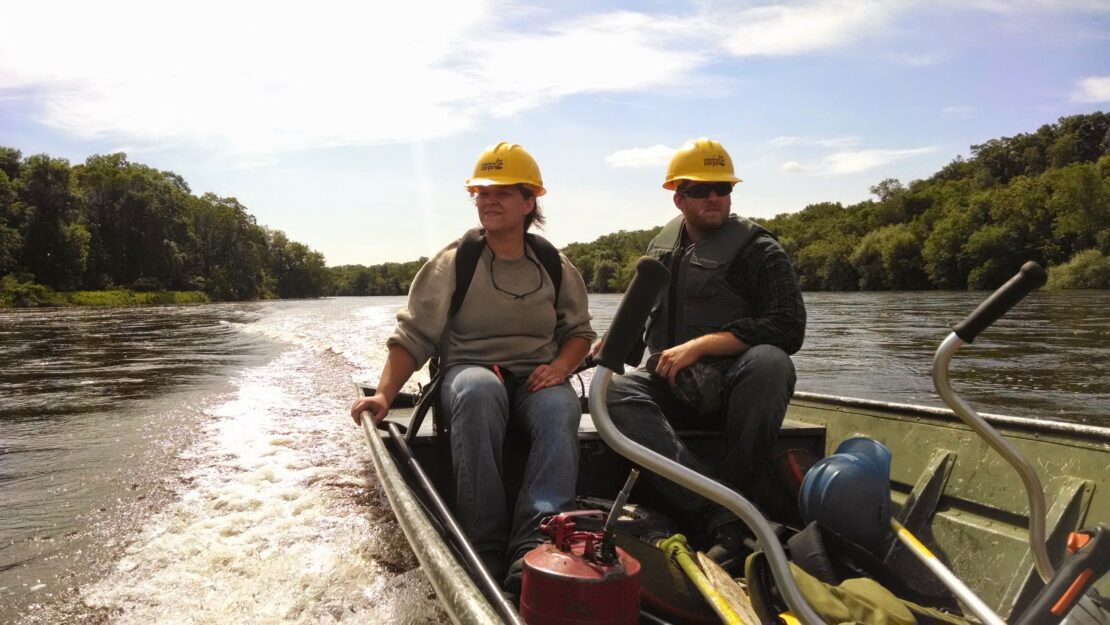Resources restored, lives changed…World saved


By: Nick Cox
It’s unfortunate that the phrase ‘Save the World’ isn’t taken seriously. There should be how-to books, college courses, job descriptions, marketing campaigns that all don the phrase. Of course, serious use of the phrase would require popular agreement that we live in a world that needs saving. Plausible, at least until you ask the follow up question, “Saving from what?” Well, since I’m the only one here, I’m going to take the liberty to define some terms and make some assumptions. Because I’m here to save the world, and I know plenty of other folks who share that exact mission.
The ‘world’ that needs saving is Minnesota, it’s the Midwest, it’s North America and it’s the entire planet; it’s our world. It’s the stuff that we depend on for food, shelter, water, fresh air, but also for recreation, inspiration, beauty, sanity.

Now for the tricky part. From what does the world need to be saved? You pick. It’s really that easy. Point at something near you and I bet you there’s something that can be done to save the world from that thing. There’s a refrigerator nearby and I can hear it hum as it plots to destroy the world, it’s already started and I’m helping it. If it’s not stopped, it will rot in a landfill and leach chemicals for years. Without a master plan for packing it in an energy efficient way, I can’t stop it from sucking extra unnecessary electricity for years to come. It chuckles as mountain tops explode and coal is extracted for power to keep an ice cube tray and a bag of strawberries frozen in my otherwise empty freezer. Curse you, refrigerator.

Something must be done. Something is being done. In my time with the Conservation Corps field crews, I’ve met so many people who share this world-saving mission with a specific focus on repairing the negative effects we have had on our natural world. Recently, we had the chance to meet some fellow world savers in other programs within the Corps.

● There are folks imbedded in soil and water conservation districts that work with communities and landowners to create lasting solutions that protect those precious resources.
● Amy F. from Project Get Outdoors is working to navigate barriers that obstruct children in urban environments from getting outdoors, by helping facilitate a lifelong connection with nature and healthy, active lifestyles.
● Mike R. Patrick D. and Mike W. are corps members with the Home Energy Squad and are working to educate and assist homeowners on the simple and immediate changes that can be made in their homes to save energy. Visiting about 200 homes per month, the total amount of energy saved due to these changes is astonishing.
● Ana and Ana are corps members working to create best management practices for dealing with aquatic invasive species in Minnesota’s almost 12,000 lakes, as well as the Adopt-a-River program which activates volunteers that have cleaned up millions of pounds of trash out of the Mississippi River over the years.
● Kristi L. and Brooke M. are working to make sure that the DNR is able to effectively reach younger generations that are increasingly using technology to facilitate and enhance their relationships with nature.
● Adam M. and Ryan M. both work with RREAL (Rural Renewable Energy Alliance) to increase awareness of the availability of solar energy, helping to reduce dependance on fossil fuels for folks at all income levels.
The Corps attracts young world savers (alright, call us superheroes if you must) because it gives us the training and the opportunity to be effective in our world saving efforts, now and beyond our time as corps members. Whatever thing you pointed at earlier, I’m almost sure you could find a corps member who can discover and foil its plot to destroy the world. Maybe it’ll even be added to our job descriptions. I’d sure love to put “Save the World” under the Conservation Corps section of my resume.
